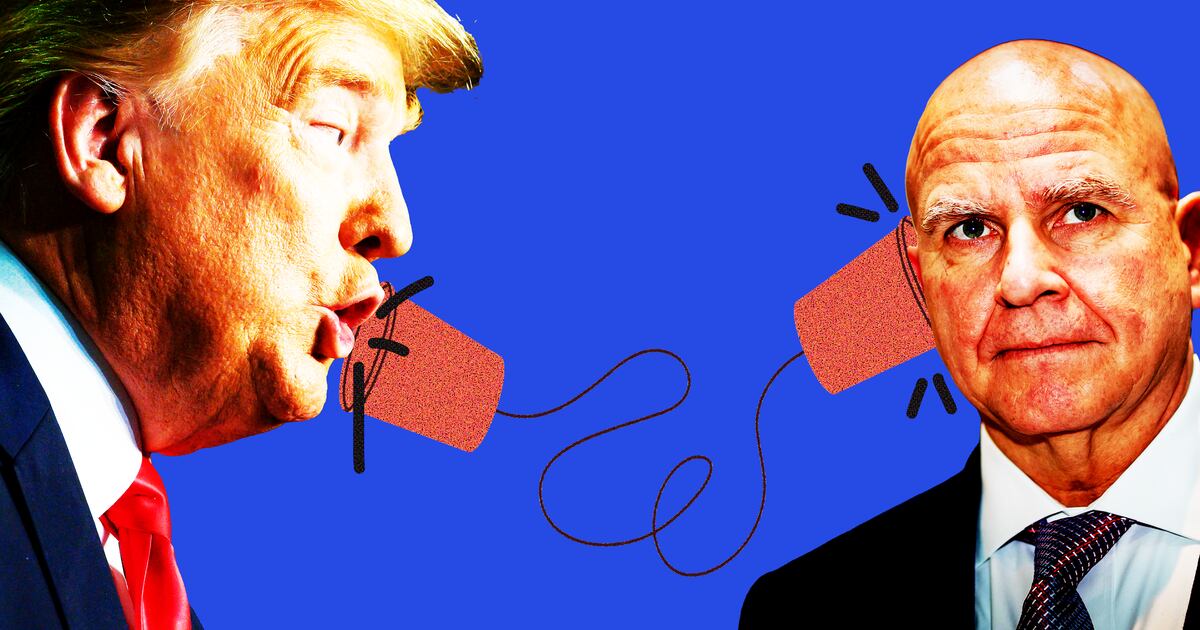A few years ago, when the Chinese artist Ai Weiwei was invited to show at the German festival called Documenta—it’s the art world’s most prestigious event—his “piece” consisted of the most generous of gestures: he arranged for a visit from 1,001 of his compatriots, who might not otherwise have traveled. (Many of his “guests” hadn’t had passports; a few were lacking last names.) So it’s poignant and ironic that on April 3, on his own way out of his homeland, the 53-year-old artist was detained by the authorities. Days later they announced that Ai was a suspect in unspecified “economic crimes”—code for “we hate you, and we’re taking you down.” They also published an editorial that accused Ai of being a “maverick of Chinese society” who likes “surprising speech” and “surprising behavior.”

There’s a sad history of “surprising” artists following their muse to disaster. In the 1950s, the great abstractionist Morris Louis used new toxic paints to make a new kind of art, and died before fame hit; Boris Pasternak got the Italians to publish Doctor Zhivago, won the Nobel Prize for it—and was promptly stomped on by the Soviet regime.
You could say that, in getting arrested, Ai also took a hit from his muse: as his work has gotten better and better, more and more original, it has also become more directly political, and more clearly in the face of the people who could hurt him. You could even say that his arrest is also his masterpiece: it shows that, by going full-bore into politics, he has at last made art that risks changing the world. It has put him at risk, too.
In 2009, after working to uncover truths about the tragic earthquake in Sichuan, he was beaten by the local cops and could have died from a clot on his brain. In 2010 he posted several political tweets; one of his studios soon got bulldozed. And now he’s in jail, no one knows for how long.

Ai’s friend, the author and musician Wu Hongfei, says he told her of a dream he had three days before being detained: “He saw a lot of people in this village, where everyone was crippled. Some people had no heads, and some people had no arms, and he wanted to get out of this village, but he couldn’t. See, he knew he was going to be arrested.”
Ai is due—or had been due, as things now stand—to unveil a piece of public art near New York’s Central Park in May, and that might have pushed officials to act. They didn’t need their most famous and least biddable artist getting any more recognition abroad, and becoming any more untouchable.
You could say that, in getting arrested, Ai also took a hit from his muse: as his work has gotten better and better, more and more original, it has also become more directly political, and more clearly in the face of the people who could hurt him.
To us, Ai’s piece should look safe, almost goofy: a bunch of Chinese zodiac animals in bronze, like charms off a giant’s bracelet. For the Chinese, it’s all about picking at a scab: Ai’s animal heads are a riff on figures made in China in the 18th century, then stolen by European forces in 1860. The Chinese have been on a quest to get all of them back (a few are still lodged in Western collections), so for Ai to send more of them abroad must read as some kind of nose thumbing. Or perhaps it’s the nose thumbing that is the real art in this case, as in all of Ai’s most recent and most important work. (Ai is also poking at America, I think, by inviting us to smile at dumb tchotchkes he’s dumped on our streets, and betting that we won’t see them as more than that.)
The Smithsonian’s Hirshhorn Museum had also been planning an Ai exhibition, a full retrospective in the summer of 2012. Chief curator Kerry Brougher says he had been expecting a visit from the artist: “I was always worried something would happen to him. And now it has.”
Gao Wenqian, a former panegyrist for the Communist Party, fled after the horrors of Tiananmen Square and now works in New York. He says it’s clear to him that behind the radical surface of Ai’s artistic activism is “a love for the country. There is a saying that the more deeply you love, the more deeply you hate.” And the more deeply, sometimes, you are hated. Gao says that China is a powder keg approaching the “explosion point.” Ai, he feels, could have been the match to ignite it. He had to be snuffed out.
Ai “has really upped the ante in the last two years,” explains Barbara Pollack, a New York critic who recently published a book called The Wild, Wild East , about the Chinese art world. Ai’s work has always had political implications: some early, famous photos showed him giving the finger to both the White House and Tiananmen Square, and he once smashed a Han dynasty urn, as though giving up on China’s grand history. But since the Beijing Olympics and the Sichuan earthquake in 2008, his politics have become his art. “I’m really scared because I’m not sure what the Chinese government will do with Ai Weiwei,” says Pollack. “What he’s done is really quite heroic…Many people felt he was emerging as a leader of a protest movement.” Pollack says the Western avant-garde idea of “blurring the distinction between life and art” is common currency on China’s cutting edge. Ai “is an art piece himself,” says Wu, Ai’s musician friend. “Everything he does is art; there is no way to separate his life from his art. There’s a shot of him naked…his belly—that’s art.” But Ai has taken this logic further than others: he’s also erased the border between his art and his political action. When Ai, the living artwork, speaks out in anger, that is his art, too.
Prior to the Olympics, Ai decried Beijing’s great Bird’s Nest stadium—which he had helped design and was his calling card in China—as a deliberate distraction from the nation’s problems. When officials refused to come clean on who had died in the earthquake, he launched a blog campaign that named 5,200 children who lost their lives. Then he took that humiliating number abroad by installing a memorial sculpture in Munich that included thousands of children’s backpacks. Where other successful Chinese artists make work that’s standard fare in the West—paintings and sculptures and installations, and even performances, that are best described as “evocative” or “poetic”—only Ai, with his politics, has pushed into truly new territory.

The prominent German curator Hans Ulrich Obrist has said that Ai’s relentless blogging and tweeting and agitation have come to count as a kind of “social sculpture.”
Western artists may toy with such actions out on the cultural margins where they live, but Ai Weiwei is in the thick of China’s social strife. One Chinese curator reported the words of a friend who had spoken to both Ai and his rivals: “When I talk to Chinese artists about politics, they get mad. When I talked to Ai Weiwei about his art, he got mad. He wanted to talk about politics.”
According to Pollack, Ai had long been useful to the cultural establishment in China. He spent a decade on the New York art scene, and once he moved home, in 1993, he became a rare -English-speaking connector between Chinese artists and that world. But that role has gotten harder to play. He recently told Pollack he sees “freedom of speech and individual rights” as the core values of his art—which means that art is inherently opposed to the values of China’s regime. Gao, the former pane-gyrist, says that officials first tried to buy Ai’s silence with a sinecure position, to make him “a political vase, for decoration, to make the government look good.” He refused, so they went on to shut him down.
Their move may backfire. In China, Gao says, the talk on the Internet is that “if the country cannot tolerate someone like Ai Weiwei, there’s no hope for China.” That complete despair of the status quo could lead to a nothing-to-lose effort to change it, Egyptian style. Given the size of Ai’s Twitter following—76,000 so far, on a service most Chinese can’t even access—arresting him, Gao says, is like tightening the lid on a pressure cooker without putting out the fire beneath. Ai “uses his art for the people, to influence people,” Gao says. “His art is not just for art’s sake.”
This points to the central irony in this whole story: while many Chinese artists are in it for the money, Ai is acting like the perfect communist cultural worker intent on advancing a people’s paradise on earth. Pollack says that the first time she met him, “he used so many references to the Cultural Revolution that I thought he was putting me on.” In fact, he may have been channeling his father, Ai Qing, one of the great poets of the Chinese revolution and now a hero across China.
Yet Ai knows what really happened to that “hero” because he lived through it too: in 1958, Ai’s entire family was sent to China’s hinterland for almost 20 years of brutal “reeducation.” It’s said they sometimes survived, if barely, on boiled sheep’s hooves. The question is, does the old man’s return to favor, in the last decades of his life, feed some distant hope for Ai, his art, and his country?
The Solomon R. Guggenheim Foundation has launched an online petition to free Ai Weiwei. Click here add your name to those demanding his release.
Isaac Stone Fish contributed reporting to this story.
Blake Gopnik writes about art and design for Newsweek and The Daily Beast. He previously spent a decade as chief art critic of the Washington Post and before that was an arts editor and critic in Canada. He has a doctorate in art history from Oxford University, and has written on aesthetic topics ranging from Facebook to gastronomy.






